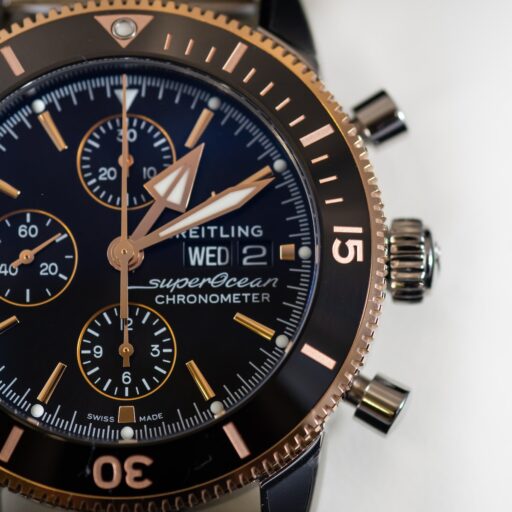Support our educational content for free when you purchase through links on our site. Learn more
When Were Wrist Watches Invented? 10 Fascinating Facts to Know! ⌚ [2025]
Wristwatches have become an essential part of our daily lives, but have you ever wondered about their origins? The story of when wristwatches were invented is packed with intrigue, innovation, and a touch of royal flair. From their humble beginnings as a mere accessory for women to becoming a staple in men’s fashion, wristwatches have undergone a remarkable transformation. Did you know that the first wristwatch was created for a queen in the early 19th century? This article dives deep into the captivating history of wristwatches, exploring key milestones, technological advancements, and the cultural significance they hold today.
Join us as we unravel the timeline of wristwatches and discover how these timepieces evolved into the stylish and functional accessories we cherish. Whether you’re a watch enthusiast or just curious about the evolution of timekeeping, this post will provide you with insights that are both informative and entertaining!
Key Takeaways
- Wristwatches originated in the early 19th century, with the first known model created by Abraham-Louis Breguet for Queen Caroline Murat.
- The popularity of wristwatches surged during World War I, as soldiers found them more practical than pocket watches.
- Technological advancements, such as the balance spring and quartz movement, revolutionized wristwatch accuracy and affordability.
- Today, wristwatches serve not only as timekeepers but also as fashion statements and symbols of personal style.
- Explore our recommended links for luxury watch brands and buying guides to find the perfect timepiece for your collection!
👉 Shop Luxury Watches on: Amazon | Rolex Official Website | Patek Philippe Official Website
Table of Contents
- Quick Tips and Facts
- The Fascinating History of Timekeeping: From Sundials to Wristwatches
- The Evolution of Timekeeping Devices: Clocks to Pocket Watches
- The Birth of the Wristwatch: Who Invented It?
- Key Innovations in Watchmaking: Balance Spring and Escapements
- Mass Production and the Rise of Affordable Timepieces
- The Electric Revolution: The Birth of Electric Watches
- Quartz Watches: The Game Changer in Timekeeping
- The Future of Timekeeping: Smartwatches and Beyond
- The Impact of Technology on Wristwatch Design
- Cultural Significance of Wristwatches: More Than Just Timekeepers
- Conclusion
- Recommended Links
- FAQ
- Reference Links
Quick Tips and Facts
- Wristwatches were first popularized in the late 19th century, primarily for military use during World War I. ⚔️
- The first wristwatch was created by Abraham-Louis Breguet in 1810 for Queen Caroline Murat of Naples. 👑
- Patek Philippe and Cartier were instrumental in the evolution of wristwatches, with Cartier’s Santos-Dumont being one of the first men’s wristwatches. ✈️
- The Quartz Crisis in the 1970s revolutionized the watch industry, leading to a surge in affordable quartz watches. ⏳
- Smartwatches have emerged as the latest innovation, blending technology with traditional timekeeping. 📱
The Fascinating History of Timekeeping: From Sundials to Wristwatches

The journey of timekeeping is as intricate as the mechanisms that power our beloved watches. From the ancient sundials that marked the passage of time with shadows to the sophisticated wristwatches we sport today, the evolution is nothing short of fascinating.
Early Timekeeping Devices
- Sundials and water clocks were among the first methods used by ancient civilizations to track time.
- The mechanical clock emerged in the 13th century, paving the way for portable timepieces.
The Birth of the Pocket Watch
The pocket watch became a status symbol in the 16th century, with intricate designs and craftsmanship. These timepieces were often worn by nobility and were heavy, ornate, and often inaccurate.
The Birth of the Wristwatch: Who Invented It?
The wristwatch, as we know it, had humble beginnings. Initially dismissed as a women’s accessory, it gained traction through necessity and innovation.
The First Wristwatch
- 1810: Abraham-Louis Breguet designed the first wristwatch for Queen Caroline Murat. This marked a significant shift in how we perceive timepieces.
- 1868: Patek Philippe created a bracelet watch for Countess Koscowicz, further solidifying the wristwatch’s place in fashion.
Military Influence
The practicality of wristwatches became undeniable during World War I, where soldiers needed a reliable way to keep time without fumbling for pocket watches. This led to a surge in popularity among men.
Key Innovations in Watchmaking: Balance Spring and Escapements
The evolution of wristwatches is deeply tied to technological advancements in watchmaking.
The Balance Spring
- Introduced in the 17th century, the balance spring improved accuracy significantly, reducing timekeeping errors from hours to mere minutes.
- This innovation paved the way for the minute hand, which began to appear on watch faces in the late 17th century.
Escapements
- The lever escapement, invented in the 18th century, became the standard for mechanical watches, allowing for more precise timekeeping.
Mass Production and the Rise of Affordable Timepieces
The 19th century saw a revolution in watchmaking with the advent of mass production.
Interchangeable Parts
- 1851: Aaron Lufkin Dennison established a factory that utilized interchangeable parts, leading to the creation of the Waltham Watch Company.
- This innovation made watches more affordable and accessible to the general public, transforming them from luxury items to everyday essentials.
The Electric Revolution: The Birth of Electric Watches
The mid-20th century introduced electric watches, changing the landscape of timekeeping once again.
The First Electric Watches
- 1950s: The first generation of electric-powered watches hit the market, offering greater accuracy and convenience.
- Brands like Bulova and Hamilton led the charge in this new era of watchmaking.
Quartz Watches: The Game Changer in Timekeeping
The Quartz Crisis of the 1970s reshaped the watch industry, introducing a new era of precision and affordability.
The Seiko Astron
- 1969: The Seiko Astron became the world’s first quartz watch, revolutionizing how watches were made and perceived.
- Quartz watches offered unmatched accuracy compared to their mechanical counterparts, leading to a decline in traditional watchmaking.
The Future of Timekeeping: Smartwatches and Beyond
Fast forward to the 21st century, and we find ourselves in the age of smartwatches.
The Rise of Smartwatches
- 2010: The launch of the Apple Watch marked a significant milestone in wearable technology.
- Smartwatches combine traditional timekeeping with modern technology, offering features like fitness tracking, notifications, and even phone calls.
The Impact of Technology on Design
- As technology advances, watch designs have evolved to incorporate sleek, minimalist aesthetics while maintaining functionality.
Cultural Significance of Wristwatches: More Than Just Timekeepers
Wristwatches are not just tools for telling time; they carry cultural significance and personal stories.
Fashion Statements
- Brands like Rolex and Omega have become synonymous with luxury, often seen as status symbols.
- The wristwatch has evolved into a fashion accessory, with styles ranging from sporty to elegant.
Personal Stories
Many watch enthusiasts have unique stories tied to their timepieces, whether it’s a family heirloom or a gift from a loved one. These watches often carry sentimental value beyond their functionality.
Conclusion

The journey of the wristwatch from a simple timekeeping device to a complex blend of art, technology, and personal expression is truly remarkable. Whether you’re a collector, a casual wearer, or someone just starting to explore the world of watches, there’s a rich history behind every tick of the hand.
For more insights into the evolution of watches, check out our articles on Watch History and Evolution and Guide to Buying Watches.
Recommended Links
FAQ

-
When was the first wristwatch invented?
The first wristwatch was created by Abraham-Louis Breguet in 1810. -
What led to the popularity of wristwatches?
The practicality of wristwatches during World War I significantly boosted their popularity among men. -
How did quartz watches change the industry?
The introduction of quartz watches in the 1970s provided unmatched accuracy and affordability, leading to a decline in traditional mechanical watches.
Reference Links
Conclusion

The journey of the wristwatch is a captivating tale of innovation, necessity, and style. From its early beginnings as a delicate accessory for women to its rise as a staple in men’s fashion, the wristwatch has evolved into a powerful symbol of personal expression and technological advancement.
Key Takeaways
- Positives: The wristwatch offers convenience, style, and a rich history that connects us to the past. It serves not only as a timekeeping device but also as a fashion statement and a piece of art.
- Negatives: While traditional mechanical watches can be exquisite, they often require regular maintenance and can be less accurate than their quartz counterparts. Smartwatches, while feature-rich, may lack the timeless elegance of classic designs.
In conclusion, whether you’re drawn to the craftsmanship of a luxury brand like Rolex or the innovative features of a smartwatch, there’s a timepiece out there that suits your needs. We confidently recommend exploring the diverse world of wristwatches, as each piece tells a story and reflects the personality of its wearer.
For those interested in diving deeper into the world of watches, check out our recommended links below!
Recommended Links
- 👉 Shop Rolex Watches on: Amazon | Rolex Official Website
- 👉 Shop Patek Philippe Watches on: Amazon | Patek Philippe Official Website
- 👉 Shop Cartier Watches on: Amazon | Cartier Official Website
- Books on Watch History: A Man and His Watch | The Watch Book
FAQ

Who is credited with inventing the first wristwatch?
The first wristwatch is credited to Abraham-Louis Breguet, who designed it for Queen Caroline Murat of Naples in 1810. This innovative design marked a significant shift in how time was kept and worn, transitioning from pocket watches to wristwatches.
What were the first wristwatches made of and how did they function?
The earliest wristwatches were typically made of brass and featured intricate designs. They functioned using mechanical movements powered by mainsprings, similar to pocket watches. These early models often had only an hour hand and were not as accurate as modern timepieces, requiring frequent winding.
How did wristwatches become more popular than pocket watches?
Wristwatches gained popularity primarily due to their practicality during World War I, where soldiers needed a reliable way to keep time without fumbling for pocket watches. Post-war, they became fashionable for men, further solidified by innovations in design and technology.
What are some of the key milestones in the evolution of wristwatch technology over the years?
Key milestones include:
- 1810: The first wristwatch designed by Breguet.
- 1868: Patek Philippe’s bracelet watch for Countess Koscowicz.
- 1969: The launch of the Seiko Astron, the first quartz watch.
- 2010: The introduction of the Apple Watch, marking the rise of smartwatches.
What role did technology play in the evolution of wristwatches?
Technology has played a crucial role in the evolution of wristwatches, from the introduction of the balance spring in the 17th century to the quartz movement in the 20th century. Each technological advancement has improved accuracy, reliability, and functionality, leading to the diverse range of timepieces available today.
How do smartwatches compare to traditional wristwatches?
Smartwatches offer features like fitness tracking, notifications, and connectivity with smartphones, making them versatile tools for modern living. However, traditional wristwatches are often valued for their craftsmanship, longevity, and aesthetic appeal, serving as both functional items and fashion statements.
Read more about “What is the History of the Wristwatch? Uncover 13 Fascinating Milestones! ⌚✨”


